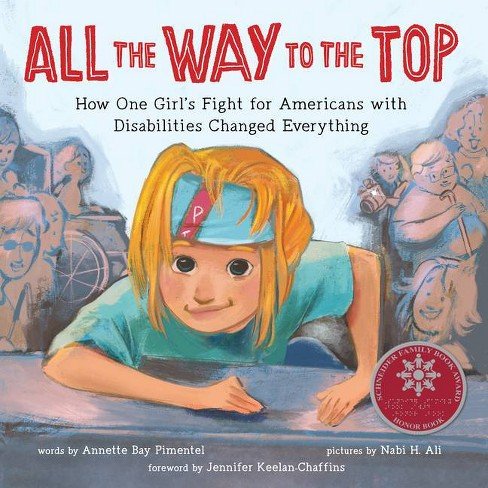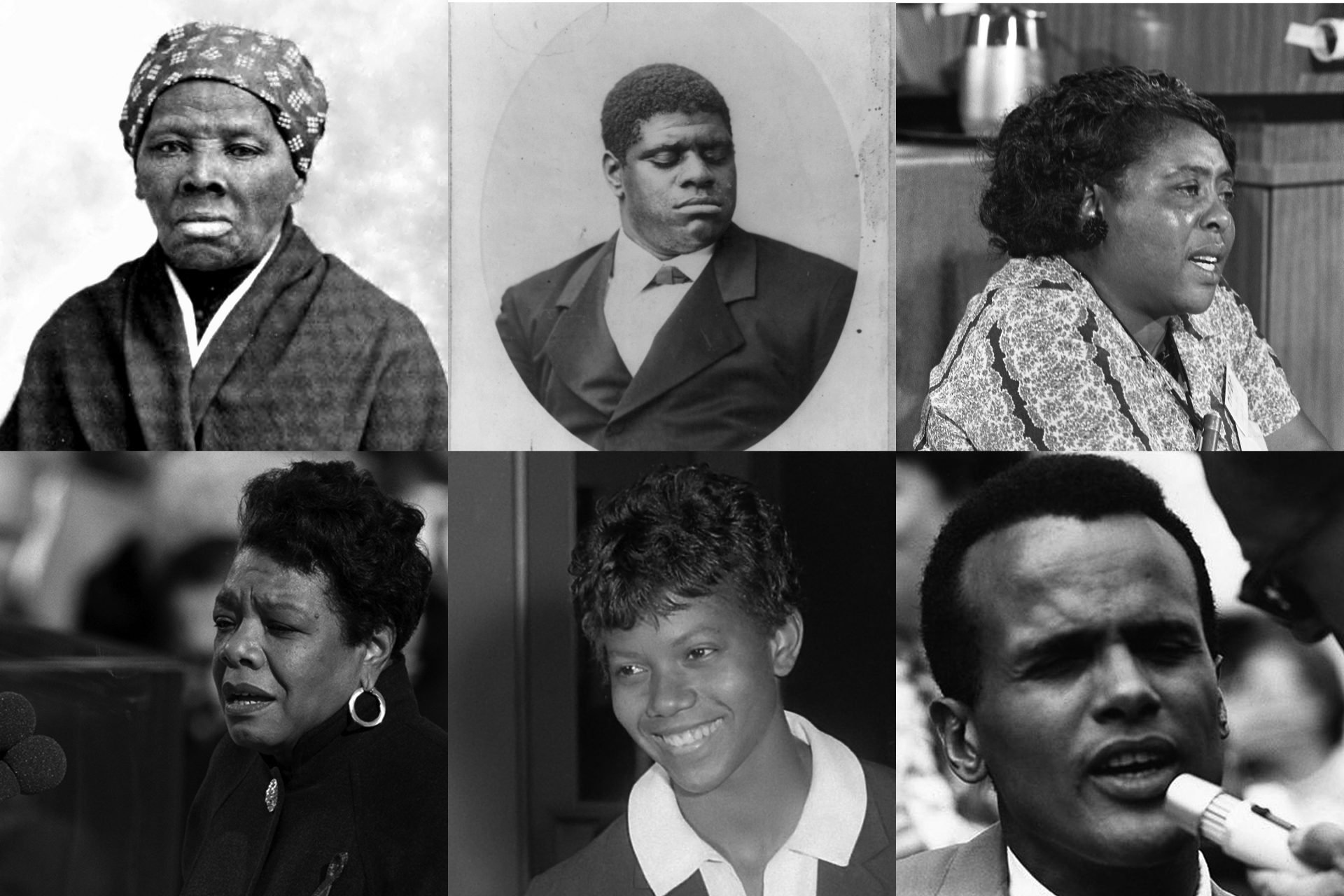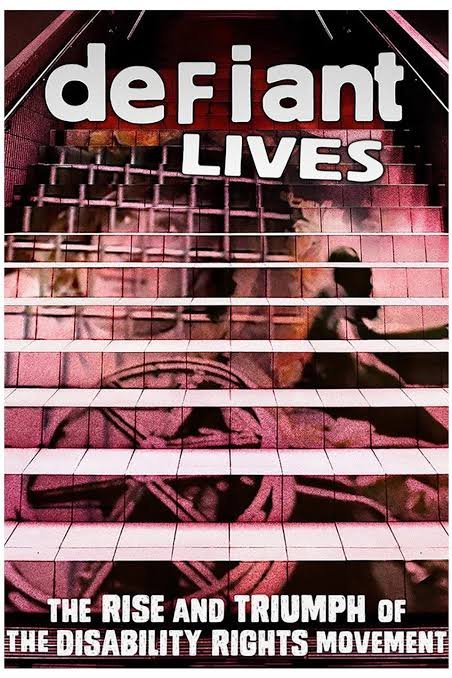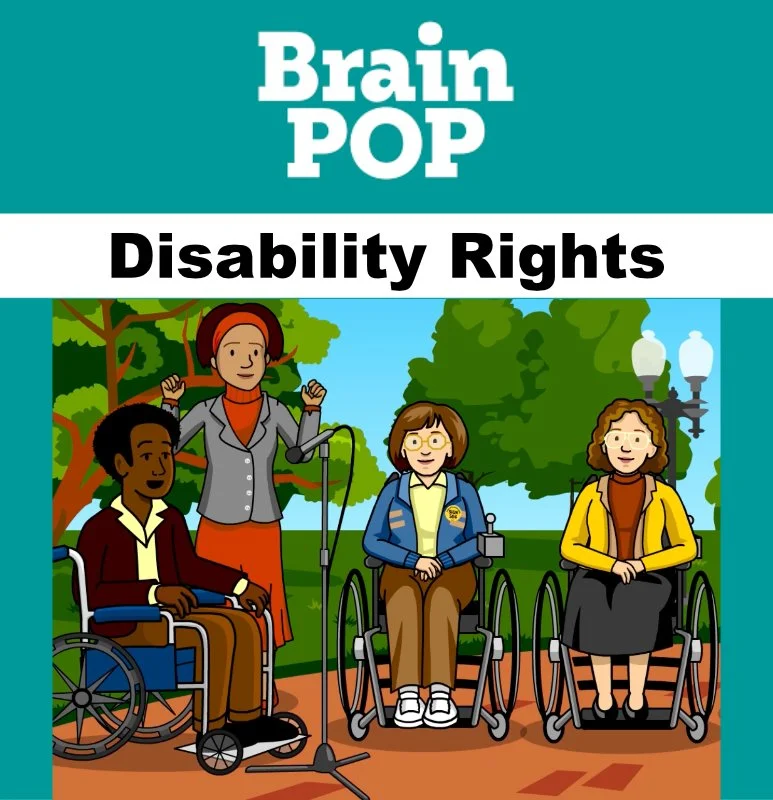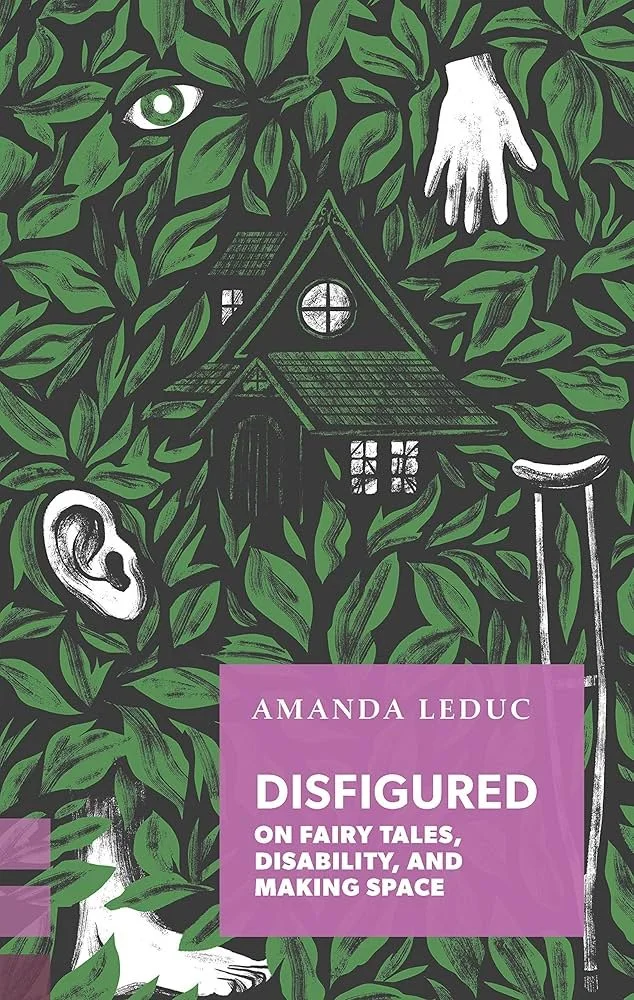Disability History
Disability History Timelines
Timeline of Historical Moments in Disability History was developed with the Institute on Disabilities at Temple University - Timeline goes to 2019
Western Pennsylvania Disability History and Action Consortium's Disability History Timeline
Moments in Disability History from 3500 BC to today presented by Disability Social History Project
Scroll down for some important moments in Disability History as well as some influential people associated with the Disability Rights Movement and related content
Primary Sources about Disability History
As our friends from Engaging America state, “Primary sources … can provide entry points and deepen exploration into historical events. Primary sources add immediacy, such as the faces in a photograph, the emotional tone of a drawing or song, or the complex look of a handwritten document. Documents from multiple points of view can illuminate conflicting ideas and events. Varied media, including maps, oral histories, published reports, and graphs offer many options for connection and investigation”.
We share these collections of primary sources as tools to continue introducing disability into the conversation from natural perspectives, using disabled people to tell their own stories whenever possible.
Books about Disability History for Kids
The Disability Rights Movement by Amy Hayes, Grades K-4
A historical look at disability rights for kids
All the Way to the Top by Annette Bay Pimentel, Foreword by: Jennifer Keelan-Chaffins, Grades K-4
A true story of Jennifer Keelan, the activist whose participation in the Capitol Crawl at just eight years old encouraged Congress to pass the Americans with Disabilities Act. Read Aloud Available
Lesson Plan using “All the Way to the Top”
Fighting for YES!: The Story of Disability Rights Activist Judith Heumann - by Maryann Cocca-Leffler - K - 5
Picture book about disability rights activist Judy Huemann
We Want to Go to School!: The Fight for Disability Rights - picture book by Maryann Cocca-Leffler
Children in the United States weren’t always allowed to go to public school. This story is about the case Mills v. Board of Education of the District of Columbia which led to laws that gave children that right.
We Want to Go to School Read Aloud (with image descriptions)
Lesson plan using “We Want to Go to School”
Books about Disability History and Culture for Adults
A Disability History of the United States by Kim E. Nielsen
The first book to cover the entirety of disability history, from pre-1492 to the present (published in 2013)
Disability Visibility, by Alice Wong
A collection of contemporary essays by disabled people. Using blog posts, manifestos, eulogies, Congressional testimonies, and more, Wong’s anthology shares insight into the lived experiences of disabled people.
A version of Disability Visibility adapted for Young Readers with 17 of these stories is also available.
Movies/Videos to Watch and Discuss
History and Philosophy of the Disability Rights Movement
Teaching Comprehensive History Webinar Series-Disability Rights Movement, Part 1
Colorado Experience: Gang of 19: ADA Movement Sneak Peak
Other Resources to Learn about the History of the Disability Rights Movement
This collection of articles, videos, music, artifacts, ephemera and more represents over 30 years of history of a grassroots disability rights organization that is still going strong.
Many stories and events related to people with disabilities never make it into history books or shared public memories. Familiar concepts and events such as citizenship, work, and wars become more complicated, challenge our assumptions about what counts as history, and transform our connection with each other when viewed from the historical perspective of people with disabilities, America’s largest minority.
Key Moments in Disability History
Disability History Timelines
Western Pennsylvania Disability History and Action Consortium's Disability History Timeline
Moments in Disability History from 3500 BC to today presented by Disability Social History Project
1975 - Passage of the Education for All Handicapped Children Act now known as the Individuals with Disabilities Education Act (IDEA) (1975)
This piece of legislation was reauthorized in 1990 and is now known as the Individuals With Disabilities Education Act (IDEA). IDEA is important to celebrate because it ensures that all students with and without disabilities have access to a free and appropriate public education.
1977 - Section 504 of the Rehabilitation Act
The 504 Sit-in was a disability rights protest that began on April 5, 1977. People with disabilities and the disability community occupied federal buildings in the United States in order to push the issuance of long-delayed regulations regarding Section 504 of the Rehabilitation Act of 1973.
Videos:
The Power of 504 (open caption, english) 18 min.
Award-winning 18-minute documentary video, which captures the drama and emotions of the historic civil rights demonstration of people with disabilities in 1977, resulting in the signing of the 504 Regulations, the first Federal Civil Rights Law protecting people with disabilities. Includes contemporary news footage and news interviews with participants and demonstration leaders. Available in open caption, audio descriptive and standard formats.
Patient No More: Introduction 10 min.
Patient No More: Demanding Change 6min
Paul K. Longmore Institute on Disability invites you to discover a remarkable, overlooked moment in U.S. history when people with disabilities occupied a government building to demand their rights. Known as the “Section 504 Sit-In,” the protest profoundly changed the lives of people with and without disabilities and paved the way for the Americans with Disabilities Act (ADA) in 1990. www.patientnomore.org
San Francisco Sit-In a Defining Moment in Disability Rights History
NPR News: Disability Rights, Part II
1978- We Will Ride - The Gang of 19
“We will ride!” The origin of the disability rights movement in Denver.
“Some of the foundational protests that ignited the disability rights movement took place on July 5-6, 1978, just around the corner from the Denver Public Library at Colfax and Broadway. Men and women of the Atlantis community, known as “The Gang of 19,” threw themselves in front of buses in an attempt to convey their disenfranchisement. This group blocked the intersection all day and night, chanting their mantra, “We will ride!” until representatives of the Regional Transportation District (RTD) were willing to talk about the absence of wheelchair-accessible buses. It was this initial protest that brought public light to the many other kinds of discrimination and abuse faced by the disabled community.”
https://history.denverlibrary.org/news/we-will-ride-origin-disability-rights-movement-denver-0
1988 - Deaf President Now!
In March 1988, Gallaudet University experienced a watershed event that led to the appointment of the 124-year-old university’s first deaf president. Since then, Deaf President Now (DPN) has become synonymous with self-determination and empowerment for deaf and hard of hearing people everywhere.
Learn about Gallaudet University and the Deaf President Now movement
Deaf Mosaic episode about Deaf President Now - filmed in 1988
History for Kids - Deaf President Now!
Deaf President Now Unit for grades 7 - 12
1990 - The Capitol Crawl and the Passage of the ADA (Americans with Disabilities Act)
“The Americans with Disabilities Act (ADA) was signed into law on July 26, 1990, by President George H.W. Bush. The ADA is one of America's most comprehensive pieces of civil rights legislation that prohibits discrimination and guarantees that people with disabilities have the same opportunities as everyone else to participate in the mainstream of American life -- to enjoy employment opportunities, to purchase goods and services, and to participate in State and local government programs and services. Modeled after the Civil Rights Act of 1964, which prohibits discrimination on the basis of race, color, religion, sex, or national origin – and Section 504 of the Rehabilitation Act of 1973 -- the ADA is an "equal opportunity" law for people with disabilities.”
https://dredf.org/about-us/publications/the-history-of-the-ada/
How the ADA Changed the Built World | Crip Camp | Netflix - 11:55 second video by Netflix
Interview with Cathleen James Holdsworth
Video interview about her experience at the Capitol Crawl
1999 - Olmstead Act
Announcement of Olmstead decision (1999)
The Olmstead decision, or Olmstead v. LC, is the name of one of the most important civil rights decisions for people with disabilities in the United States. This 1999 United States Supreme Court decision was based on the Americans with Disabilities Act. The Supreme Court said that people with disabilities have a qualified right to receive state-funded supports and services in the community rather than institutions when the following three-part test is met:
the person's treatment professionals determine that community supports are appropriate;
the person does not object to living in the community; and
the provision of services in the community would be a reasonable accommodation when balanced with other similarly situated individuals with disabilities.”
Smithsonian video about the Olmstead Act
How People with Disabilities Won the Right to Choose Their Own Homes
2010 - Rosa’s Law
In 2010, President Barack Obama signs legislation that replaces the term "mental retardation" with the term "intellectual disability." Law is named for 9-year old Rosa Marcellino, a young advocate with Down syndrome.
Some of the Influential People in the Disabled People’s Movement
Ed Roberts
“Ed Roberts was both an advocate and an activist. He was a leader in the civil rights movement and championed the rights of people with disabilities. He was the founder of the first Center for Independent Living and the World Institute on Disability. Ed advocated for his right to attend a university and was an activist in the 504 sit-in held in San Francisco. He was known for a lot of things by a lot of people, but most importantly he believed in empowering others to become advocates and activists.” - Yo Disabled and Proud
Ed Roberts Day by Yo Disabled and Proud
Google Doodle for Ed Robert’s 78th birthday in 2017
Ed Roberts: Free Wheeling - 13:40 second video by Yo! Disabled and Proud
“Ed Roberts - Champion of Disability Rights” - 20 minute video read aloud of picture book by Diana Pastore Carson
Justin Dart
Justin Dart, Jr., is widely thought of as the “father” of the ADA. He wanted to create social change. Not long after being appointed by President Reagan as vice-chair of the National Council on Disability in 1981, Justin and his wife Yoshiko went on a national tour, stopping in every state to gather stories from individuals with disabilities. Their goal was to collect accounts of injustices and hardships that disabled people faced in order to create a piece of legislation that would finally address discrimination against people with disabilities in America. They then brought the stories they collected back to Washington, D.C. and began working towards legislation that is now known as the Americans with Disabilities Act (ADA).
And Justin for All - by New Mobility Magazine
A short history of Justin Dart, Jr. “Father of the ADA”
Judith Heumann
Judith (Judy) Heumann is a lifelong advocate for the rights of disabled people. She contracted polio in 1949 in Brooklyn, New York and began to use a wheelchair for her mobility. She was denied the right to attend school because she was considered a "fire hazard" at the age of five. Her parents played a strong role in fighting for her rights as a child, but Judy soon determined that she, working in collaboration with other disabled people, had to play an advocacy role due to continuous discrimination.
Our fight for disability rights -- and why we're not done yet | Judith Heumann TED Talk
Judith Heumann’s Fight for Disability Rights (feat. Ali Stroker) - Drunk History - 8 minute video by Comedy Central
Fighting for YES!: The Story of Disability Rights Activist Judith Heumann - by Maryann Cocca-Leffler - K - 5
Picture book about disability rights activist Judy Huemann
Kitty Cone
“Shunned in school because of her disability, she devoted her life to the cause, organizing a historic sit-in that led to landmark federal legislation.”
Overlooked No More - Kitty Cone - by the New York Times (gift link)
How Did Kitty Cone Change Disability Rights? - 4:32 second video by the Smithsonian
Alice Wong
Disability activist who has risen to fame as a creator and project coordinator for the Disability Visibility Project with spinal muscular atrophy. She has also served on Asians and Pacific Islanders with Disabilities of California and as a presidential appointee to the National Council on Disability.
Roland Johnson
He survived 13 years of neglect and abuse, including sexual assault, at the notorious Pennhurst State School and Hospital outside Philadelphia before emerging as a champion for disabled people.
Overlooked No More: Who Fought to Shut Down Institutions for the Disabled
Laura Hershey
Laura Hershey was a renowned disability-rights activist, writer and poet and was one of the most prominent voices of the disability rights movement.
Memoriam: Laura Hershey, 48, championed disability rights
Stacy Park Milburn
Stacey Park Milbern was a Korean-American disability rights activist. She helped create the disability justice movement and advocated for fair treatment of disabled people.
Google Doodle for Stacey Park Milburn
Podcast by KQED - What Stacey Park Milburn
Anita Cameron
Anita Cameron is a disability justice activist who has been involved in social change activism and community organizing for over 40 years. She is a published author and blogger writing primarily about issues that affect people with disabilities. Her passion is working to ensure that people with disabilities are equal participants in all aspects of society, not only as recipients of services, but as valued members of, and contributors to the well-being of their communities.
Disability Conversation: Anita Cameron - On July 26, 2021 - the 31st anniversary of the passage of the Americans with Disabilities Act - we spent some time talking with Disability activist, Anita Cameron
Lois Curtis and Elaine Wilson
Lois Curtis and Elaine Wilson, two women with disabilities living in Georgia nursing homes, who asked state officials to allow them to move into their own homes in the community. After the State refused, Atlanta Legal Aid attorney filed a lawsuit on their behalf. After appeals, the case was heard by the Supreme Court and the decision became known as The Olmstead Act which said that services to persons with disabilities must be provided “in the most integrated setting possible.” This landmark decision paved the way for community integration for disabled people.
Smithsonian video about Lois, Elaine and the Olmstead Act
Joyce Ardell Jackson
Joyce Ardell Jackson was diagnosed with arthritis at the age of 12. She went on to endure more than 50 operations throughout her life. Despite the constant pain brought on by her arthritis, Jackson graduated from Santa Clara University. Upon graduation, she started working for the Center for Independent Living. In 1977 Jackson joined fellow activist, Kitty Cone, for a 26-day sit-in, highlighting the need for legislative protection for disabled Americans. Jackson was one of twenty disability advocates to meet with the Carter administration. During this meeting the activists convinced the administration to implement Section 504- the civil rights legislation prohibiting federally funded agencies and programs from discriminating against disabled individuals. Jackson also served three terms on the board of the American Coalition of Citizens with Disabilities. Learn more about Joyce Ardell Jackson here.
Lydia X. Z. Brown – Writer, Activist, Speaker. Attorney
Lydia X. Z. Brown (They/ Them) is widely considered one of the leading advocates for autistic disability rights in the United States. As an undergraduate student at Georgetown University, they served as a student organizer and advocate for disabled students on campus. Lydia’s advocacy was inspired by their realization that students with “hidden” or intellectual disabilities found it particularly challenging to get the support they needed from the administration and the communities around them. This experience led Brown to work with the Autistic Self Advocacy Network, an organization that at its core believes that individuals with autism need to be involved whenever autism is discussed. Through this work Brown co-edited All the Weight of Our Dreams, an anthology of art and writing entirely by autistic people of color in 2017. Read more about Lydia X. Z. Brown here.
Things to Watch about Disability History
History and Philosophy of the Disability Rights Movement
How Did Kitty Cone Change Disability Rights?
How People with Disabilities Won the Right to Choose Their Own Homes
Judith Heumann’s Fight for Disability Rights (feat. Ali Stroker) - Drunk History
How the ADA Changed the Built World | Crip Camp | Netflix
Teaching Comprehensive History Webinar Series-Disability Rights Movement, Part 1
Our fight for disability rights -- and why we're not done yet | Judith Heumann TED Talk
Colorado Experience: Gang of 19: ADA Movement Sneak Peak


